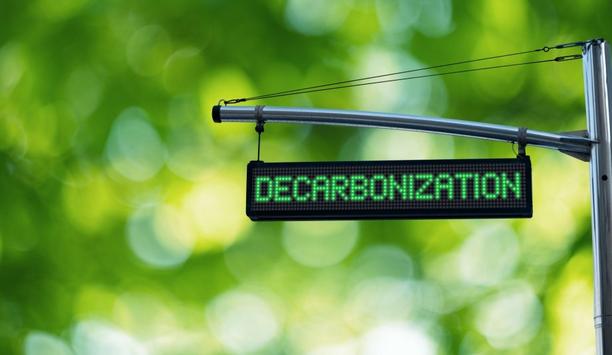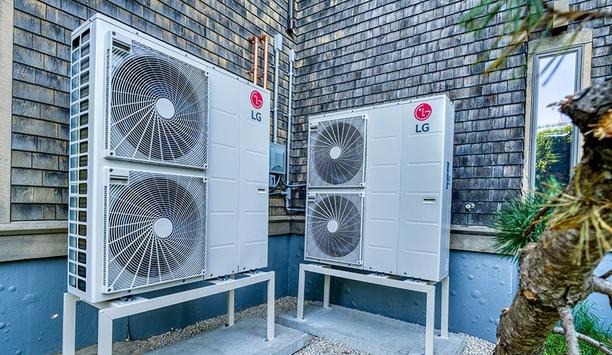Technology & Trends - Heating
Summer may not seem like the most opportune time to be selling heating products and solutions. The temperatures are already hot, so why would a homeowner need to worry about their heating source? For many HVAC clients, the idea of being proactive before the cold weather drops is foreign. That’s why contractors need to remind them of the importance of focusing on their heating units during the summer. capitalize on heating solutions There are plenty of opportunities available for contra...
Today’s HVAC contractors are acutely aware that they need visibility on the internet and in their community if they want the phones to ring with requests for new business. As a result, HVAC company leaders have become savvy about marketing and advertising and know that search engine optimization, direct mail flyers, and flashy truck wraps attract attention. Public relations But what they don’t stop to think about is that their competitors likely have a very similar marketing strat...
Coastal and tropical areas present their own unique challenges for business and residential HVAC units. For these machines, which we use to create comfortable, safe air for occupants, corrosion is enemy number one in high moisture environments. Due to the high level of moisture and salts in the air along the coast, HVAC solutions are more susceptible to corrosion. These salts can negatively impact unprotected coil fins and metal surfaces, causing them to corrode, which can ultimately lead to s...
With each passing year, more and more individuals are becoming conscious of the importance of sustainability. As a result, there has been a boom in the electric vehicle (EVs) market. According to the International Energy Agency, the sales of EVs doubled in 2021 with nearly 10% of global car sales being electric. Two million electric vehicles were sold in the first quarter of 2022 alone. It was estimated that 13% of new cars sold in 2022 would be electric. Gas-Powered vehicle For those who cho...
The energy savings due to the lowering of heating temperatures during unoccupied periods can exceed 20% in the tertiary sector and 30% in the education sector. When buildings are not occupied continuously, the idling or even the optimized shutdown of heating systems is one of the main sources of energy savings. heating system consumption Indeed the heating system consumption matches the thermal loss of heated buildings. When we willingly let the internal temperature drop during a vacant...
A preventive maintenance program could save 12-18% over reactive maintenance, as the U.S. Department of Energy predicted in 2010. For many businesses, the savings could be higher, considering the risks of downtime and today’s economic conditions pushing up costs across the supply chain. It’s also possible for a program to miss the mark. By one measure, 50% of the costs of a preventive maintenance program are often wasted. The question is, how do you know if your maintenance program...
Following the UK Chancellor of the Exchequer Rishi Sunak’s Spring Statement on 23 March, several imminent and future changes were laid out by the UK government. This included VAT scrappage for residential energy-saving measures like heat pumps and solar panels, a 12-month cutting of fuel duty by 5p per liter, and to support the decarbonization of commercial premises, targeted business rate exemptions for eligible plant and machinery used in onsite renewable energy generation and stora...
‘Energy storage holds the key to providing clean energy for heating and powering the home and reducing carbon emissions’ Carlton Cummins, CTO and Co-Founder of clean technology company Aceleron explain how this will work. As we transition away from natural gas and other fossil fuels, there is no question that we absolutely have to make better use of renewable energy. Using a battery energy storage system (BESS) combined with renewable technology such as solar means that it can be st...
Energy consumption continues to be one of the primary contributors to a building’s carbon emissions and its operational costs. Around 40% of this energy is used to power HVAC systems. To improve sustainability and reduce operating costs, it’s in a building owner’s best interest to find ways to make their building’s heating and cooling systems more efficient. Identifying areas that will make the biggest difference starts with knowing which systems consume the most energy...
Net-zero is high up on the agenda. And to achieve the UK’s carbon-neutral pledge by 2050 the country’s building stock must be decarbonized. Embodied carbon When we talk about decarbonizing buildings, there are two distinct categories of emissions that come into play. The first is embodied carbon. Here, the embodied carbon of a building includes emissions deriving from the construction materials, the building process, and the fixtures and fittings inside. It also covers emissions f...
Decarbonizing heat is one of, if not the biggest challenges we face in our journey to net zero. Most of the heat in UK homes and businesses is currently provided through fossil fuels, predominantly gas. Gas releases carbon emissions and other particles that are bad for air quality and bad for our environment. So, to get to net-zero we need to replace gas as our main source of heat. The Government plans to phase out gas boilers in newly build homes from 2025, but with the vast majority of exist...
Housing market dynamics, pressures on global supply chains, and the rising costs of materials and labor are a few of the trends that are impacting the HVAC industry. While COVID-19 restrictions may have been largely lifted throughout the U.S., many of these lingering trends can be traced back directly, or indirectly, to the pandemic. Jobber’s Home Service Economic Report: Record Growth Fuels Labor Shortage explores these trends and their true impact on home service businesses’ abili...
There are several benefits to using unit heaters in a variety of locations. Whether they are in a home garage or a large commercial warehouse, unit heaters can provide space-saving heating options that can be installed quickly and easily with the right preparation. Unit heaters can be used as a primary or secondary heat source, and the directed warm air of a properly installed unit can make a noticeable difference in the overall comfort level of a space. Unit heater installation Unit heaters...
AI (Artificial Intelligence) is a smart buildings’ biggest ally. Without it, a building could hardly be classed as smart. For building owners and managers, AI is imperative to create a secure and comfortable experience for their occupants every day. What a building platform should do is gather data from various sources from the building management system and other smart technologies, to gather it all in one place. The data should then be fed into a flexible, scalable cloud-based platform...
Every six years, the United States Department of Energy (DOE) reviews how much energy certain home appliances and mechanical systems use and determines if an increase in energy efficiency requirements is justified. New energy conservation standards As a result of the 2017 assessment, the DOE has mandated new energy conservation standards that take effect on January 1, 2023, for all newly manufactured residential and commercial air conditioners, heat pumps, and gas furnaces. In addition t...
Even though the COVID-19 pandemic is seemingly drawing to a close, living, working and learning at home is set to continue. Under this new normal, home electricity use is expected to double by 2050. Simultaneously, as climate change devastates communities around the world, we are faced with a moral and economic obligation to cut CO2 emissions from houses. Our goal is to build Net Zero houses and we can't get there fast enough. Fossil fuels use in heating systems Many countries continue to rely...
Seasonal transitions are the perfect time to take inventory and inspect a building’s various systems. We’ve been reminded for years that when we set our clocks back, we should also replace the batteries in our smoke detectors. The same thought process can be applied in support of seasonal preventative maintenance for a building’s HVAC system. Now that the cooling season has passed for a large part of the country, it is time to ensure that HVAC systems have been shut down prope...
I am writing this the day after the Autumn Spending Review, which among many measures, included a huge focus on how the Government wants to ‘level up the country’, creating a new post-pandemic economy, with higher wages and higher skills. Part of this is the £500 million ‘Multiply’ scheme, which aims to increase numeracy and basic mathematics for adults in the United Kingdom via in person tutoring, digital training and flexible courses. Lack of basic skills to acce...
The development of digital technologies in the Heating, Ventilation and Air Conditioning (HVAC) sector has been transformational for the industry, as well as for those who run HVAC systems. While the electrification and digitalization of machines, and assets has made a lot of operations simpler, it has also meant that the collection of machine data has never been more critical. Given that engineers can now view lots of different metrics on a single screen, including things like heating control...
With the increase in climate protests and UN reports highlighting future net-zero challenges, industries are trying to focus their business practices on principles of sustainable development and responsible investment. In the building sector specifically, landlords are gravitating towards certification schemes such as BREAM, LEED, and WELL (among others) to promote the sustainability of their assets and boost green credentials. Tenants are now demanding that the spaces they live and work in ar...
It is now more common to read about cases of Legionnaires’ disease in the media than ever before, with outbreaks regularly being reported in cities around the world, all the time. Many of these cases are attributed to contamination of domestic systems, showers and spas, but some are the result of operating cooling towers. While this problem is not new, with the first reported case in Philadelphia, in 1976, the United Kingdom (UK) has been at the forefront in leading the battle with Legionn...
The UK is the biggest boiler market in Europe, FACT. But the majority of heating system stock relies on gas systems – a whopping 85% are gas boilers which equate to about 1.5 million gas boilers being installed each year. Thanks to government measures and the world’s most innovative manufacturers, renewable heating is fast becoming a bit of a trend – though it’s vital to point out that still only 2% of the heating systems in the UK are represented by renewables. Heat p...
At the moment, it seems as though a day rarely goes by without low-carbon heating hitting the headlines. Whether it is reports of ‘revamping’ the Clean Heat Grant, to include a ‘boiler scrappage’ scheme, which may offer home owners up to £7000 to make the switch to a low-carbon alternative, to speculation that the Prime Minister is under pressure to push back the 2035 ban on gas boilers, the debate on how and when the low-carbon heating revolution will happen is ong...
In today’s world, we spend almost 90 per cent of our time indoors, in our workplaces, leisure areas and our homes. It is no secret that the built environment has been relatively slow in its embrace of information technology and automation. According to KPMG’s ‘Building a Technology Advantage’ report, fewer than 20 percent of construction and engineering executives, and major-project owners said they are re-thinking their business models, so as to incorporate new technolo...
With the UK committed to reducing greenhouse gas emissions to zero by 2050, drastic action is needed by the government. For new-build homes, there’s a gas boiler ban coming in less than five years’ time. And for older properties, it’s likely that gas prices will continue to rise, to encourage homeowners to switch to a more sustainable alternative. Renewable heating market With this in mind, the renewable heating market is growing rapidly, albeit from a very small base &ndash...
Over the last decades heating, ventilation, and air-conditioning systems became significantly more energy efficient. This is immensely important as they are one of the largest energy-consuming loads in commercial and residential buildings. Smooth performance of the systems requires careful installation, thorough cleaning, and regular maintenance. Running an HVAC system (energy) efficiently is challenging because of constantly changing variables: people entering and leaving a building, changing...
A landmark UN scientific study has once again highlighted the short window available to prevent irreversible climate change. Businesses are coming under pressure to dramatically accelerate their net-zero carbon initiatives. This comes at a time where market dynamism is returning across a range of key sectors following a downturn triggered by the pandemic. Businesses are also being pressured by stakeholders to recover revenues lost during the pandemic and to start rebuilding commercial activity...
The energy transition is upon us and we are shifting today’s energy use to low and zero carbon sources. The way in which we heat and provide hot water to our homes and businesses will change, and we are developing technologies that will support this transition. A bold and pragmatic policy framework will encourage investment and drive change. BEIS Hydrogen Strategy We, therefore, welcome the publication of the Hydrogen Strategy from the Department for Business, Energy & Industrial Str...
In 2019, the UK became the first major economy in the world to pass laws to end its contribution to global warming by 2050 - a landmark moment on the road to net zero. To meet that target, owners and managers of commercial buildings are increasingly facing more standards, regulations, and legislation to promote carbon reduction. This may pose challenges when it comes to investing in building service technologies, but the net-zero goal also provides an opportunity to embrace new approaches to th...
Most people spend about 90 percent of their time indoors. For home owners, indoor environmental quality (IEQ) is the most meaningful differentiator between ‘high-performance’ and ‘code-built’ homes. Indoor environmental quality IEQ describes how well the indoor environment promotes occupant comfort and health. The components of IEQ include thermal comfort, indoor air quality (IAQ), sound and lighting. Requirements for optimal IEQ vary per occupant and household, d...
Browse expert commentaries
Related videos
Introduction | Decarbonization Explained | Danfoss
Munters LCX Liquid-To-Liquid Coolant Distribution Units
Rheem Water Heating Celebrates 2024
From A To L: Your A2L Transition Guide
DownloadLeveraging Radiant And Hydronics To Help Achieve Decarbonization Goals
DownloadSealed Connectors In Harsh Environments
DownloadPowering And Cooling Next Generation Data Centers
DownloadDebunking Myths To Promote A Bright Future For Heat Pumps
Download






































